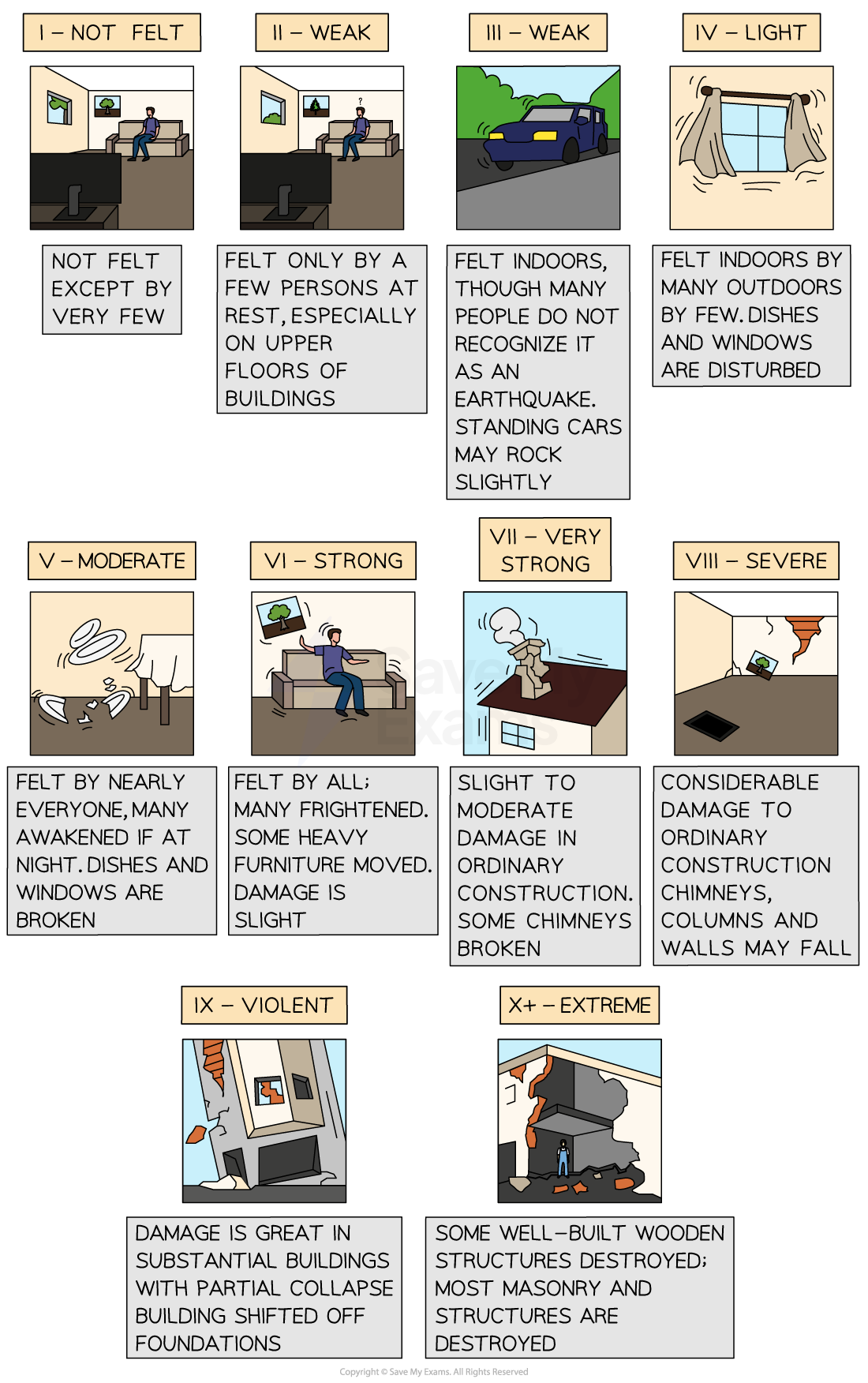Measuring Earthquakes
- Magnitude is the most common way to measure an earthquake
- It measures the energy released at the source (focus)
- The magnitude can be measured on different scales but the one which is reported on the news when an earthquake occurs is the Moment Magnitude Scale (MMS)
- It is measured using seismographs
- The MMS goes from 1 which are not felt by humans to 10
- The MMS is a logarithmic scale which means that a 6 on the scale is a ten times increase in amplitude from a 5
- The energy release is 32 times greater

Magnitude of earthquakes
Earthquake intensity
- The intensity of an earthquake is its impact on people, as well as on the built and natural environments
- The Modified Mercalli Intensity Scale is used to measure the intensity
- The scale goes from I to XII

Modified Mercalli Intensity Scale
Exam Tip
It is important to recognise that intensity and magnitude are similar but not the same.
Magnitude is the amount of energy released. Intensity is the severity of ground shaking in a particular place based on the effects on humans, buildings and the environment.

